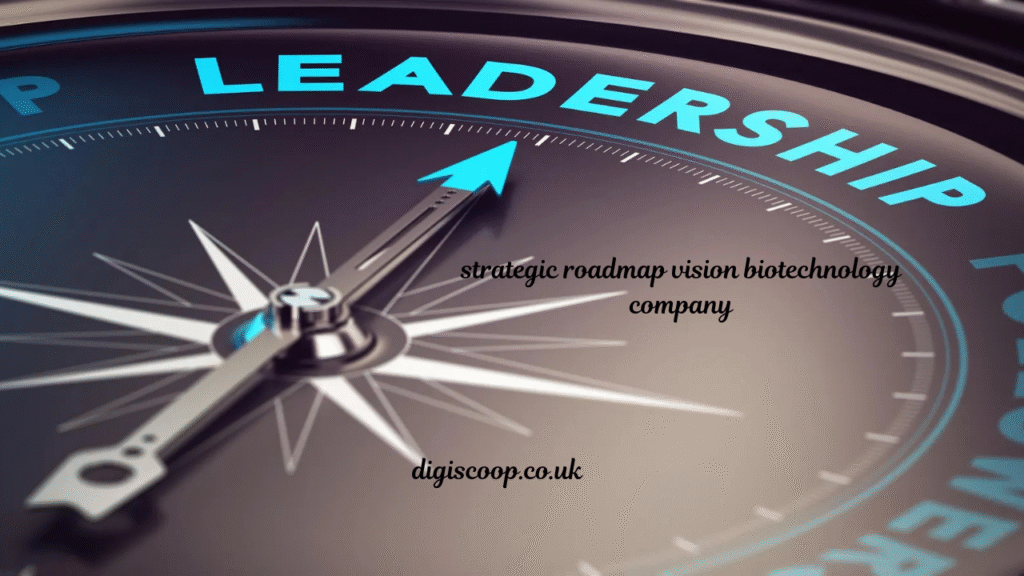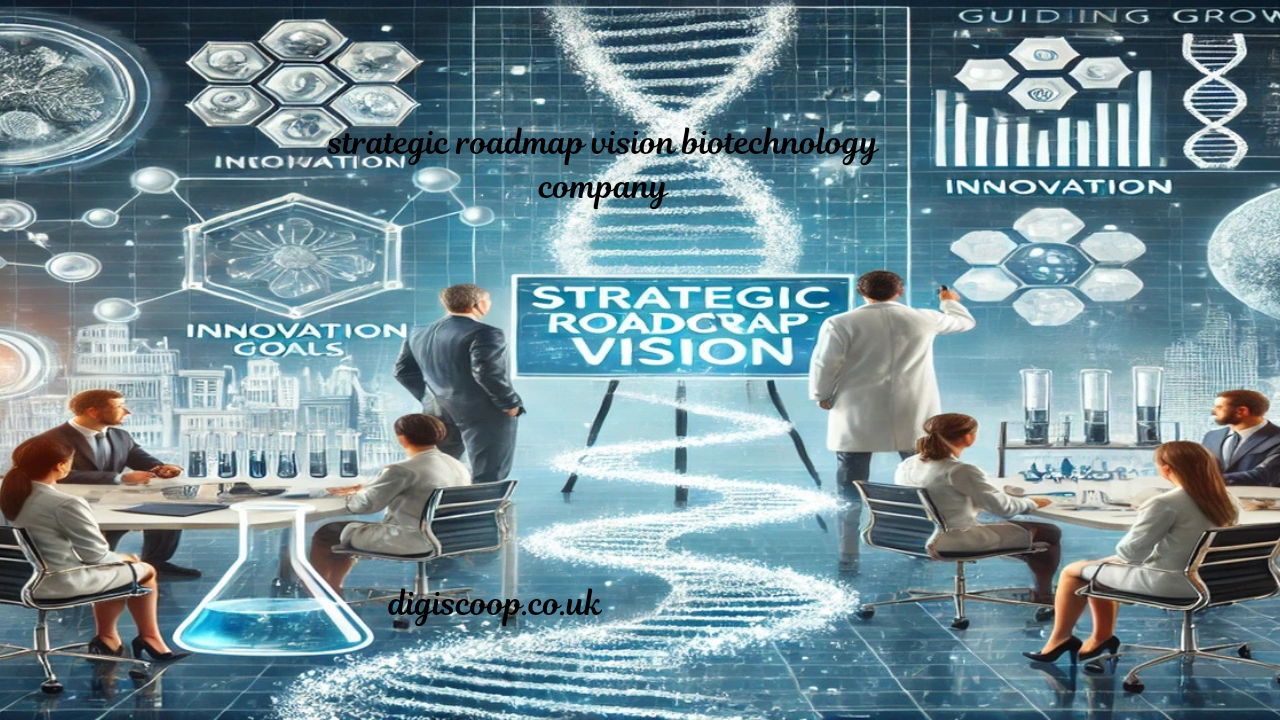Introduction: Defining the Strategic Roadmap Vision Biotechnology Company, ??
In the fast-evolving landscape of scientific innovation, a strategic roadmap vision biotechnology company, ?? stands as a beacon of progress, innovation, and calculated planning. Biotechnology, a field that merges biology with technological advances, is crucial in modern medicine, agriculture, and environmental science. But what truly differentiates a biotech firm is its ability to harness a well-defined strategy that not only directs research and development but also aligns business objectives with global needs.
This article explores how a strategic roadmap vision biotechnology company, ?? operates, what elements contribute to its long-term success, and how it navigates challenges to deliver groundbreaking solutions.
The Foundation of a Strategic Roadmap: Long-Term Vision and Mission

At the core of any successful biotechnology company lies a compelling vision—a future-facing statement that sets the tone for innovation. In a strategic roadmap vision biotechnology company, ??, this vision serves as the north star. It is typically framed around solving high-impact global problems such as eradicating diseases, ensuring food security, or reducing environmental damage.
The mission complements the vision by defining how the company intends to achieve those goals. Whether it’s through gene editing, synthetic biology, or drug discovery, biotechnology companies need a clear mission to maintain internal cohesion and investor confidence.
A clearly articulated vision and mission form the backbone of the strategic roadmap, aligning internal teams, external partners, and stakeholders toward a common objective.
Key Components of a Strategic Roadmap in Biotechnology

A strategic roadmap vision biotechnology company, ?? includes several essential components to guide its development. These elements include:
1. Scientific and Technical Goals
Biotech companies must invest in defining their scientific priorities. For example, focusing on mRNA-based vaccines, CRISPR gene-editing technologies, or microbial fermentation. Each technological direction requires distinct resources, timelines, and risk management strategies.
2. Regulatory Planning
Navigating regulatory hurdles is one of the most complex aspects of biotechnology. From preclinical trials to FDA or EMA approval, a roadmap must account for timelines, data requirements, and compliance costs. Anticipating regulatory bottlenecks can save millions and years in development time.
3. Product Pipeline Development
An essential feature of any roadmap is the product pipeline—a structured list of research candidates, therapies, or technologies under development. These are often categorized into stages: discovery, preclinical, Phase I–III clinical trials, and commercialization.
4. Strategic Partnerships and Alliances
No biotechnology company operates in isolation. Strategic partnerships with research institutions, pharmaceutical firms, or governmental agencies can accelerate innovation and scale. A roadmap outlines key collaborations that can bolster research, expand markets, or secure funding.
5. Funding and Financial Planning
Research and development are costly. A strategic roadmap includes budgeting, identifying sources of funding (venture capital, IPO, grants), and projections of ROI. Financial sustainability is essential to survive the long product development timelines in biotech.
Leadership and Governance: Driving the Vision Forward

A strategic roadmap vision biotechnology company, ?? is only as strong as its leadership. Executive teams must blend scientific expertise with business acumen. Leaders shape the company’s culture, make pivotal decisions, and communicate the vision to investors, employees, and regulators.
Governance frameworks must ensure transparency, compliance, and adaptability. Boards of directors and advisory committees play vital roles in aligning operational decisions with the long-term strategy. Effective governance ensures that the company remains mission-driven, ethical, and efficient.
Innovation as a Core Principle
Innovation isn’t just a goal—it is a core competency. In a strategic roadmap vision biotechnology company, ??, innovation must be continuous, intentional, and measurable. From laboratory breakthroughs to process optimizations, every component of the company should drive innovation.
To foster this culture, biotech companies often:
- Establish internal R&D incubators.
- Collaborate with academic research labs.
- File and protect intellectual property aggressively.
- Monitor competitor pipelines for benchmarking.
A robust innovation engine directly influences the pace at which a company can bring new therapies, diagnostics, or agricultural technologies to market.
Commercialization Strategy: Bringing Science to Society
Developing breakthrough science is only part of the equation. Turning that science into viable, scalable products is a different challenge. A strategic roadmap vision biotechnology company, ?? invests heavily in commercial strategy—market analysis, pricing, sales channels, and customer education.
The roadmap must include go-to-market strategies for each product or solution. Factors such as:
- Reimbursement frameworks,
- Licensing opportunities,
- Direct-to-consumer models, or
- Strategic exits (M&A),
must be considered early on to ensure a seamless transition from lab to life.
Risk Management and Contingency Planning
Biotech is inherently risky. Long development cycles, uncertain clinical results, and regulatory challenges make it essential for a strategic roadmap vision biotechnology company, ?? to integrate risk management throughout its planning.
Common mitigation strategies include:
- Maintaining diversified pipelines.
- Staging funding rounds based on milestones.
- Using adaptive clinical trial designs.
- Maintaining flexible manufacturing capabilities.
A successful roadmap doesn’t just aim for success—it prepares for setbacks and pivots quickly when needed.
Measuring Success: KPIs and Milestones
In any strategic roadmap, key performance indicators (KPIs) are used to measure progress. For biotech companies, these may include:
- Number of successful trials completed.
- New patents filed or granted.
- Partnerships secured.
- Market share of launched products.
- Revenue milestones.
Tracking these KPIs ensures the company stays accountable and aligned with its strategic vision.
Milestones should be realistic, time-bound, and flexible enough to accommodate the dynamic nature of scientific development. A well-designed dashboard of KPIs helps the leadership team make data-driven decisions.
Adapting to Global Trends and Societal Needs
The best strategic roadmaps are not static—they evolve. A strategic roadmap vision biotechnology company, ?? must remain responsive to:
- Global pandemics (like COVID-19),
- Climate change impacts,
- Antimicrobial resistance,
- Aging populations, or
- Evolving consumer behaviors.
By integrating foresight into the roadmap, biotech firms stay relevant and impactful. This adaptability not only helps in surviving market shifts but also in leading transformative change across healthcare and agriculture.
Conclusion: The Power of Vision in Shaping Biotechnology’s Future
A strategic roadmap vision biotechnology company, ?? does more than just operate in the biotech space—it sets a new direction for where science and society intersect. Through comprehensive planning, visionary leadership, collaborative ecosystems, and relentless innovation, such a company defines the future of human and planetary health.
In today’s rapidly shifting landscape, where technology evolves faster than regulations and diseases mutate quicker than treatments, the need for strategic clarity has never been more urgent. The biotech companies that thrive will be those who don’t merely innovate but do so with a clear, purpose-driven roadmap.
By understanding and executing the principles laid out in a strategic roadmap, biotechnology companies can make a lasting impact—not just on the market, but on the world.
Also Read : Rachel Ruggeri, ??, and the Evolution of Financial Leadership at Starbucks







